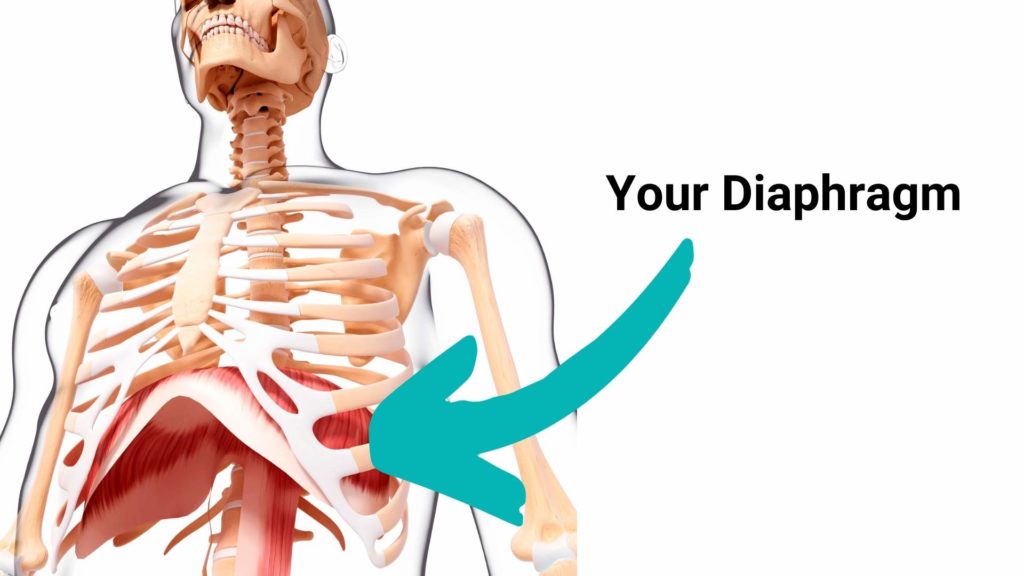Sure, the diaphragm is a “breathing” muscle.
But did you know that tension in your diaphragm tells us all sorts of things about how you breathe (yep – we look!) and how you breathe *might* be an indicator of stress you’re holding of some kind.
When you present for treatment at The Osteopaths we will never treat one system without consideration of the others as they all communicate to each other in health and in pathology.
I wanted to write today about the diaphragm, which for those of you that have had treatment with me, will know that I will always make an excuse to treat it and there’s good reason for that!

The diaphragm is like a parachute with two domes right and left, and attaches to the lowest 5 ribs, the top 3 lumbar vertebrae, and the bottom part of the breast bone – the xiphisternum.
It has so many important structures running through it!
The aorta that supplies blood from the heart, the inferior vena cava returning blood to the heart, the thoracic duct (lymph), the oesophagus, and of course some very important nerves; the phrenic and vagus nerves. And finally, the wonderful fascia that envelopes the diaphragm and connects it to the surrounding viscera and musculoskeletal system.
Dysfunction in the diaphragm may affect your digestion if it’s impinging on the oesophagus which is common in pregnant woman due to the baby taking up so much room. It may also affect babies bowel movements or their stomach if they are sicking up a lot. It can affect blood and lymph flow in both directions causing many symptoms. When tight it cannot work efficiently and be impacting breathing and/or digestion. Which can then affect exercising, your mental health, your appetite….!
Can you hear how excited I get talking about the diaphragm and it’s impact on your health? It’s like a snow ball effect to me. I think of one thing it does, and that effects the next thing, and the next, and so on! Pretty cool that the diaphragm muscle takes around 24,000 breaths a day and you don’t even think about it!
So the next time you take 5 minutes to take some deep breaths think about all the wonderful things this diaphragm is doing. And think about these breathing cues;
- Relaxed open hands
- Shoulders relaxed, not up by your ears
- Your back teeth should be slightly open, only coming together when you chew
- And relax your tongue into the floor of your mouth
And finally, remember when you come for treatment, I will no doubt find an excuse to treat your diaphragm and now you know why!
